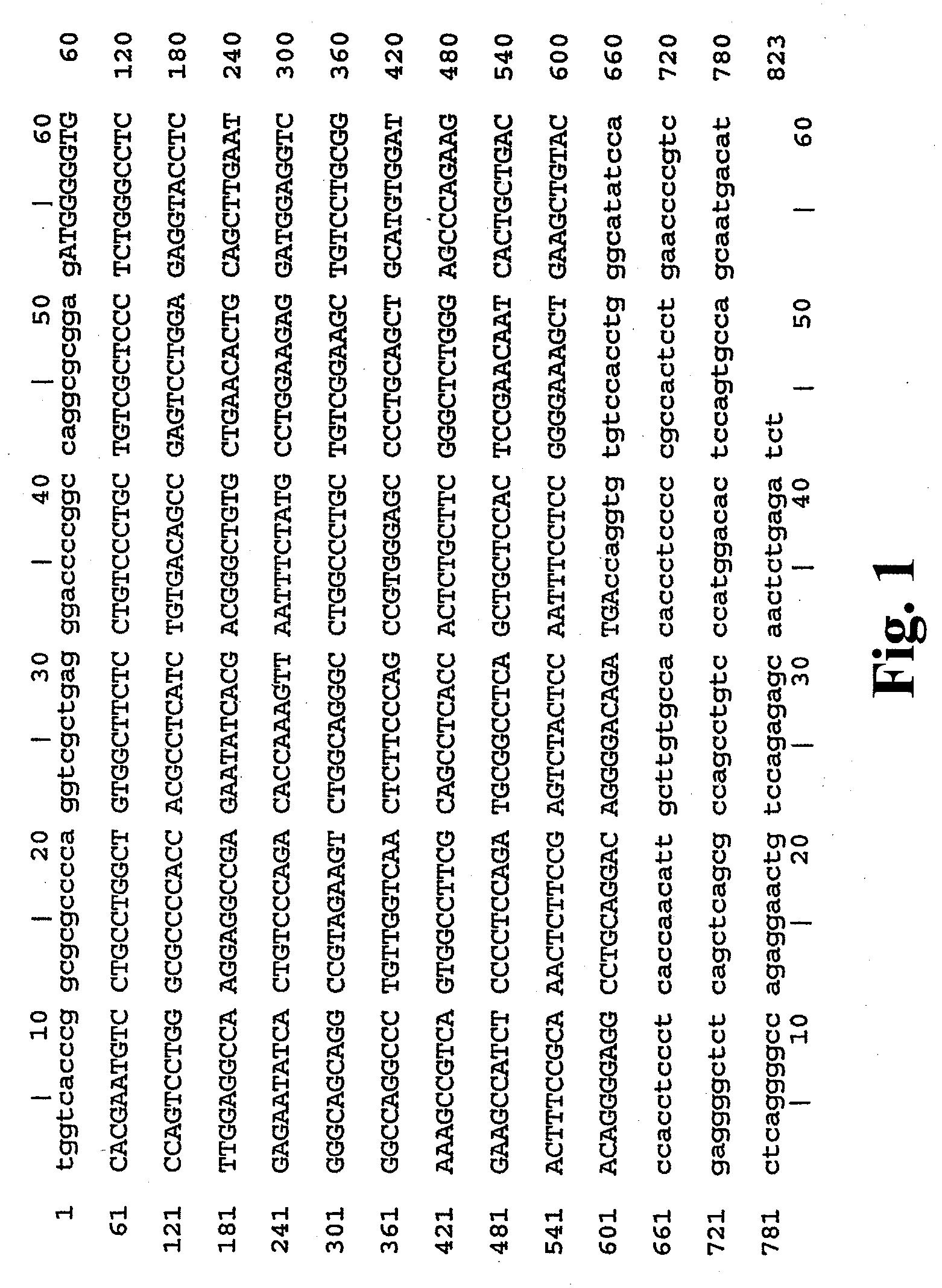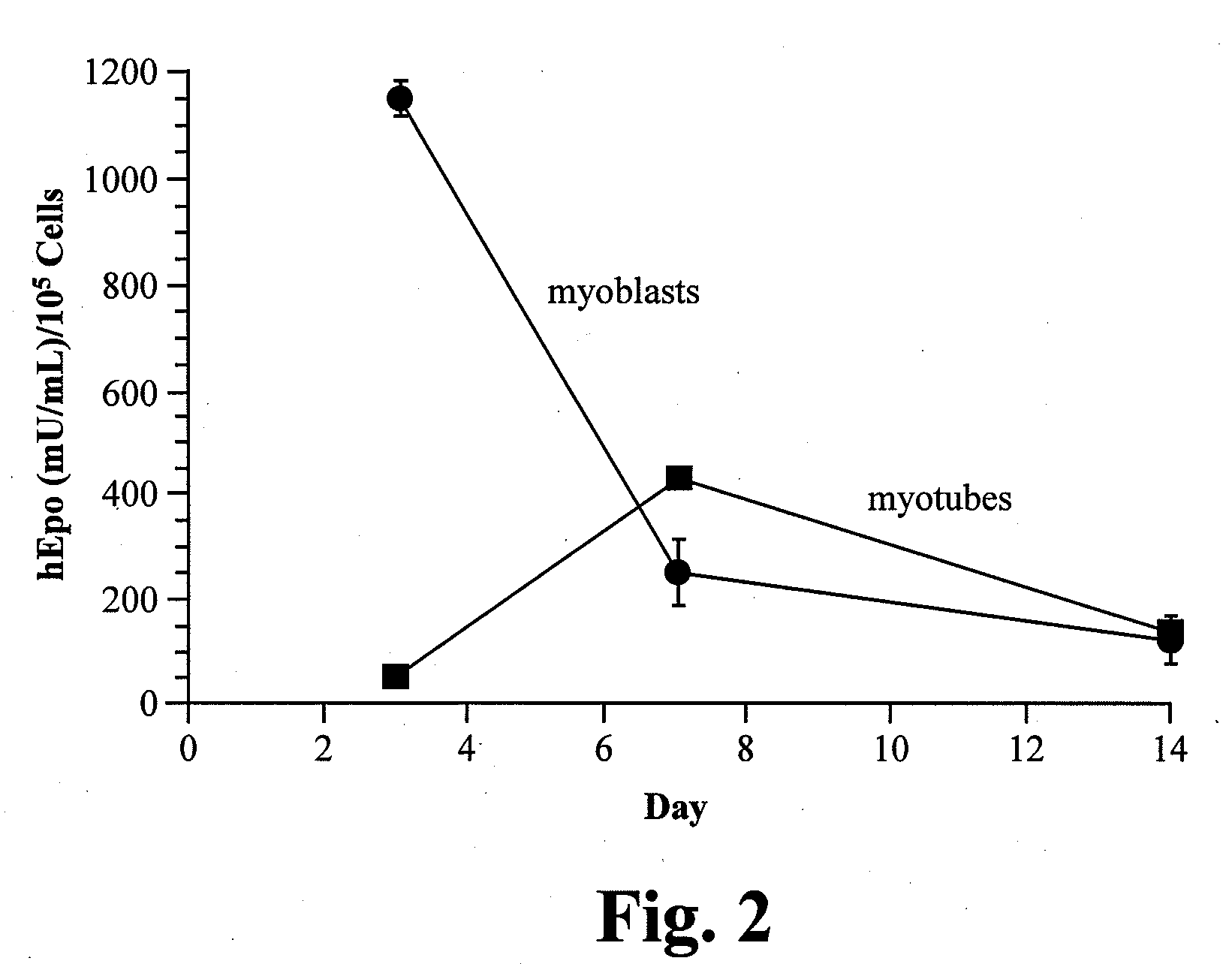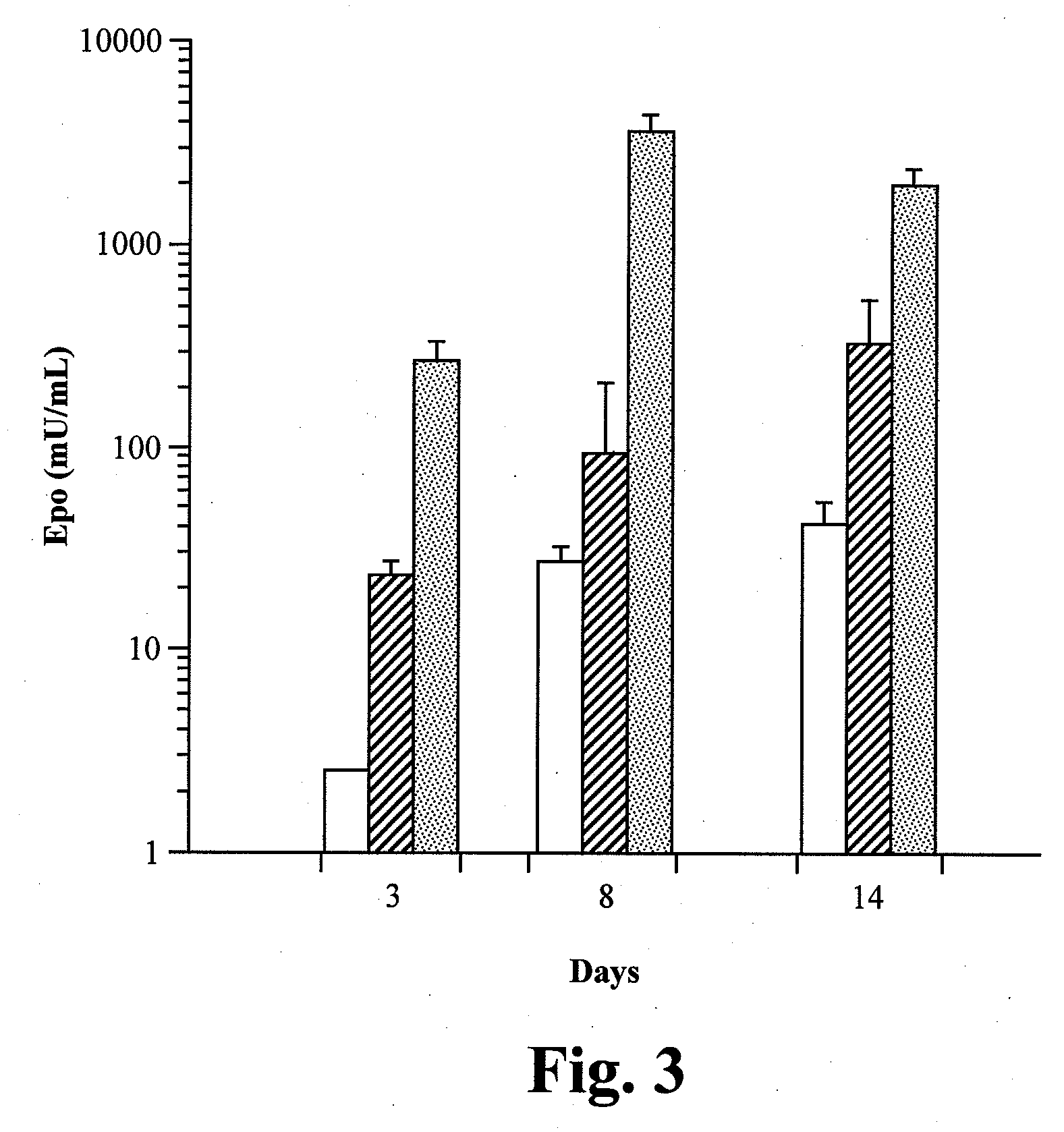Methods of treating anemia using recombinant adeno-associated virus virions
a technology of adeno-associated virus and anemia, which is applied in the field of dna delivery methods, can solve the problems of hemolysis, varying degrees of anemia, ineffective erythropoiesis, etc., and achieve the effect of efficient delivery of the epo gene and sustained production of epo in the muscl
- Summary
- Abstract
- Description
- Claims
- Application Information
AI Technical Summary
Benefits of technology
Problems solved by technology
Method used
Image
Examples
example 1
In vitro Transduction of Murine Myotubes and Myoblasts
[0127]In order to determine if differentiated cultured muscle cells are appropriate targets for recombinant AAV-virion transduction, and to assess the ability of such cells to express a transduced gene, the following study was carried out. Murine C2C12 cells were selected since these cells have been extensively studied as a model for mammalian myogenesis (Blau et al. (1993) Trends Genet. 9:269-274), and can be induced to differentiate by growth in reduced serum medium.
[0128]In the study, C2C12 myoblasts (dividing cells) were seeded in cell culture plates at a density of 2×104 cells / cm2, maintained in growth media (GM) until confluent, split, and then either cultured in GM or cultured for 5 days in murine DM. Differentiation was verified by the microscopic presence of multinucleate myotubes, representing fused myoblasts (differentiated C2C12 cells).
[0129]The C2C12 myotubes and myoblasts were transduced in culture with purified rAA...
example 2
In Vitro Transduction of Human Myotubes Using rAAV-hEPO Virions
[0131]To determine if differentiated primary human muscle cells are able to express hEPO following transduction with rAAV-hEPO virions, the following study was carried out. Primary fetal human skeletal myoblasts were seeded in cell culture plates at a density of 2×104 cells / cm2, grown to confluence in appropriate growth media, and then cultured for 14 days in human DM. Differentiation was verified by microscopic examination for multinucleate cells. In vitro transduction was carried out by adding purified rAAV-hEPO virions to the cultured myotubes in OptiMEM medium (Gibco BRL). DM was added to the cultures after virion adsorption. Control cultures were rAAV-LacZ-transduced myotubes.
[0132]Culture media was changed 24 hours prior to collection of supernatants at day 3, 8 and 14 post transduction. Secreted EPO levels were assayed by ELISA as described above in Example 1.
[0133]As can be seen in FIG. 4, the transduced human my...
example 3
Systemic Delivery of Human Erythropoietin In Vivo by Intramuscular Administration of rAAV-hEPO
[0134]Recombinant AAV virions encoding hEPO were administered to adult healthy Balb / c mice in vivo to determine if a systemic level of hEPO can be produced, and a biological response obtained. At various time points after administration, blood was obtained from the orbital venous plexus under anesthesia. Serum hEPO levels were determined by ELISA as described above. Red cell counts were done by hemocytometer, hematocrit was determined by centrifugation of blood in micro-capillary tubes, and hemoglobin concentration was analyzed by cyanmethemoglobin assay (DMA, Arlington, Tex.) according to manufacturer's specifications and compared with a standard (Stanbio Laboratory, San Antonio, Tex.) analyzed at 570 nm on a spectrophotometer. Reticulocytes were analyzed by either new methylene blue stain, or by FACS analysis of thiazole orange stained peripheral blood samples (RETIC-COUNT®, Becton-Dickin...
PUM
| Property | Measurement | Unit |
|---|---|---|
| concentration | aaaaa | aaaaa |
| temperatures | aaaaa | aaaaa |
| pH | aaaaa | aaaaa |
Abstract
Description
Claims
Application Information
 Login to View More
Login to View More - R&D
- Intellectual Property
- Life Sciences
- Materials
- Tech Scout
- Unparalleled Data Quality
- Higher Quality Content
- 60% Fewer Hallucinations
Browse by: Latest US Patents, China's latest patents, Technical Efficacy Thesaurus, Application Domain, Technology Topic, Popular Technical Reports.
© 2025 PatSnap. All rights reserved.Legal|Privacy policy|Modern Slavery Act Transparency Statement|Sitemap|About US| Contact US: help@patsnap.com



